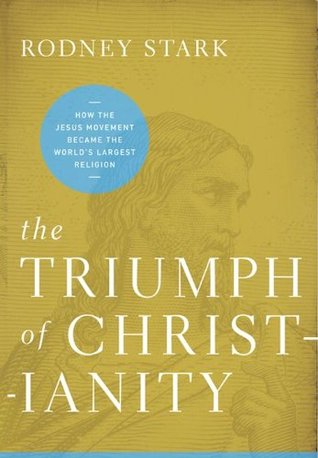More on this book
Community
Kindle Notes & Highlights
by
Rodney Stark
Read between
May 21 - August 29, 2018
As for the rest of the Jewish groups,
some demanded strict observance of the Law, while others were very lax in their observance.
Some collaborated with Roman rule, others plotted rebellion, and still others anxiously awaited the Messiah who would res...
This highlight has been truncated due to consecutive passage length restrictions.
On Christmas Eve there were about nin...
This highlight has been truncated due to consecutive passage length restrictions.
living in the Roman Empire (which had a total population of a...
This highlight has been truncated due to consecutive passage length restrictions.
there was a large Jewish community in Babylon. These communities made up what is known as the Jewish Diaspora (or dispersion) and came to play a very significant role in the spread of Christianity.
ONLY BECAUSE ROMANS WROTE most of the history of the era is King Herod (73–04 BCE ) typically remembered as “Herod the Great.” Romans remarked on his immense building projects and his faithful service to Rome. Jewish history remembers his brutality, his immorality, his subservience to Rome, and his profanation of the Temple—even though he had also caused it to be rebuilt.
Herod claimed to be a Jew, but many Jews did not accept him as such.
In an effort to gain support from the more traditional Jews, Herod undertook a massive rebuilding of the Temple in Jerusalem on a far more magnificent scale.
Herod began to appoint Sadducees
During his reign, Herod ran through ten wives and not only disinherited his sons from previous marriages, but had at least three of them murdered.
anyone he suspected of being the Messiah he had put to death.
Matthew 2:16 claims that, hoping to eliminate Jesus, Herod ordered the death of all the children under the age of two in Bethlehem.
In any event, Herod was both a tyrant and a suspected pagan, and his long reign exacerbated conflict among the many Jewish religious groups and provoked even greater antagonism toward Rome.
“The hatred was such that to be called a Samaritan was a grievous insult... some rabbis said that to eat the bread of Samaritans was to eat pork, or to marry a Samaritan was to lie with a beast.”
Thus the barbed irony of Jesus’s parable of the “Good Samaritan” (Luke 10:30–37).
Moreover, the Hellenized Jews regarded themselves as culturally superior, and their haughtiness, their overt discrimination against more traditional Jews, and their presumed complicity in a campaign to eliminate Judaism entirely prompted the Maccabean Revolt.
One reason that a monopoly religion drifts toward laxity is that religious intensity is never transmitted very efficiently from one generation to the next.
(the Talmud notes twenty-four sects).
Josephus (ca. 37–100), who at least claimed to have spent time as a member of each of three leading Jewish groups: the Sadducees, the Pharisees, and the Essenes.
probably numbered no more than twenty thousand members altogether out of a population of perhaps one million.
The Sadducees represented the “official” Temple Judaism and drew their support mainly from the aristocracy—primarily the hereditary priestly families.
their theology was quite worldly.
taught that God’s rewards are gained only in this life.
“only those laws written in the Pentateuch were to be regarded as binding, while those that were not written down [those that were only “oral...
This highlight has been truncated due to consecutive passage length restrictions.
Pharisees believed in an immortal soul, in the resurrection of the good, and in the condemnation of
the wicked to “eternal torment.”
In their view the “good” were those who obeyed the Law, bot...
This highlight has been truncated due to consecutive passage length restrictions.
In keeping with their moderate stance, the Pharisees “formulated the doctrine of two realms, secular and divine, with respect to the state.”
Perhaps the most significant single contribution of the Pharisees was the establishment of synagogues in Israel.
when they were instituted in Israel they posed a direct challenge to the centralized Temple Judaism.
The Essenes
Essenes condemned “pleasures as evil,” rejected marriage, and embraced abstinence, and that their piety was “very extraordinary.”
Qumran,
The most extreme Zealots were known as Sicarii
thousand Sicarii (including wives and children) found martyrdom at Masada in 73.
The most famous of them was, of course, John the Baptist—
Judaism “presents no well-crafted doctrine of the Messiah.”
the Jews who wrote the scrolls found at Qumran even anticipated two Messiahs,
“the Anointed Priest and the Anointed King.”46
Hence, Jewish expectations about the Messiah were “a vast mass of confused, involved and e...
This highlight has been truncated due to consecutive passage length restrictions.
Some expected a serene and spiritual Messiah
many more expected a fierce and invincible warrior Messiah
most Jews seem to have assumed that his would be a worldly kingdom.
There may even have been a prophecy that the Messiah would die and rise again in three days. This resurrection prophecy is based on an interpretation of a newly discovered stone, three feet high and covered with writing in ink, now referred to as “Gabriel’s Revelation.”


